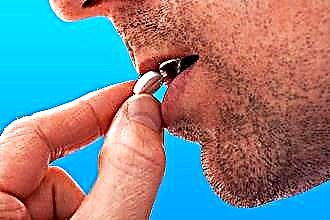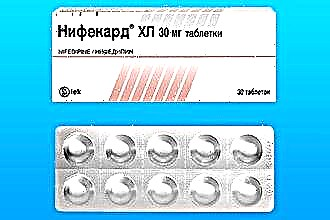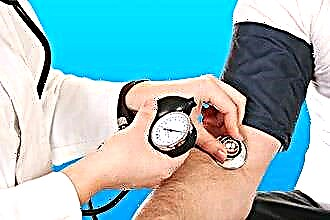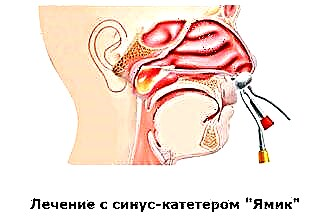Arterial hypertension and chronic variants of coronary heart disease require constant drug monitoring and regular dose adjustments. A wide range of medicines allows you to select individual combinations depending on the patient's condition, the presence of concomitant diseases. Slow calcium channel blockers are considered one of the most used groups in the treatment of hypertension due to their effectiveness and ease of use. Nifecard is a modern drug with a pronounced antianginal (eliminates heart pain) and hypotensive effect.
Nifecard: composition and origin of the drug
 The drug Nifecard is one of the retard forms of dihydropyridine derivatives from the class of slow calcium channel blockers (CCBs). The main action is realized through a violation of calcium conduction into cells, relaxation of smooth muscle fibers, and a decrease in peripheral resistance in blood vessels.
The drug Nifecard is one of the retard forms of dihydropyridine derivatives from the class of slow calcium channel blockers (CCBs). The main action is realized through a violation of calcium conduction into cells, relaxation of smooth muscle fibers, and a decrease in peripheral resistance in blood vessels.
Nifecard INN (international non-proprietary name of the drug) - Nifedipine.
The drug is available in the form of transformed release tablets. The peculiarity of the structure of the surface film of the drug provides a slow increase in the concentration of active molecules in the blood plasma, the prolongation of the effect up to 24 hours.
The composition of 1 tablet of Nifecard, depending on the form of release, is presented in the table.
| Substances | Nifecard 30 mg | Nifecard 60 mg |
|---|---|---|
| Nifedipine | 30 milligrams | 60 milligrams |
Additional substances:
|
|
|
Film sheath:
|
|
|
The drug is produced in a cardboard box containing 10 aluminum blisters of 10 tablets each. The product is round, convex on both sides of the form, symbols NDP 30 are embossed on the surface (NDP 60 - depending on the dosage). The color can vary from light yellow to orange, light brown.
Allowed analogues of Nifecard: Corinfar, Cordipin, Cordaflex, Nicardia.
Indications for use
The entire group of CCB drugs is used mainly in cardiological or neurological practice due to the effect on the vascular system. Derivatives of dihydropyridine have a greater effect on the vessels of the brain, less on the coronary arteries.
Instructions for the use of Nifecard highlights the main indications:
 hypertension (persistent increase in pressure above 140/90 mm Hg);
hypertension (persistent increase in pressure above 140/90 mm Hg);- stable form of exertional angina;
- Prinzmetal's vasospastic (variant) angina;
- Raynaud's syndrome;
- vegetative-vascular dystonia, which proceeds according to the hypertensive variant;
- prevention of ischemic strokes in patients with hypertension;
- diffuse esophageal spasm.
At what pressure to take and in what dose?
The selection of treatment for arterial hypertension is made by titration (constant adjustment of the dose of the drug), depending on the sensitivity of the patient and target indicators.
An approximate start of therapy with Nifecard for the treatment of hypertension:
- Grade 1 (systolic 140-160 mm Hg / diastolic 90-100 mm Hg) - 30 mg (1 tablet) once a day;
- Grade 2 (160-180 / 100-110 mm Hg) - 30 mg once a day, with ineffectiveness - 2 times a day;
- Grade 3 (more than 180/110 mm Hg) - 60 mg 1 time per day, with ineffectiveness - 60 + 30 mg 1 time per day. Alternative management - 60 mg Nifecard + a drug from the beta-blocker group.
Nifecard belongs to the group of modern retard drugs, the use of which implies monotherapy (1 drug) 1-2 times a day.
When to take 30 mg?
The dosage of the drug 30mg is considered a starting therapy for the treatment of patients with:
 stable exertional angina;
stable exertional angina;- mild arterial hypertension of 1 degree (without complications from target organs);
- Prinzmetal angina;
- vegetative dystonia;
- Raynaud's syndrome;
- liver pathology, including when drinking alcohol (the ability to excrete the drug decreases, which leads to an increase in concentration and prolonged circulation in the blood);
- patients over 65;
- diabetes mellitus (medium and high doses contribute to an increase in hyperglycemia).
In addition, the simultaneous use with other drugs slows down the administration of the drug. The use of Nifecard 30 is recommended when taking Azithromycin, Cimetidine, Fluoxetine, Diltiazem, Ketoconazole, medicines for the treatment of HIV infection.
When to take a dose of 60 mg?
Treatment with medium and high doses of Nifedipine is recommended for:
- arterial hypertension 2 and 3 degrees;
- with ineffectiveness or contraindications for beta-blockers and ACE inhibitors (angiotensin-converting enzyme);
- when taken simultaneously with Valproic acid, Phenobarbital, Rifampicin (drugs that accelerate the excretion of Nifecard from the body).
Treatment of angina pectoris with high doses of nifedipine, according to studies, increases the risk of complications and death.
The selection of the dose of the drug is carried out under the supervision of a physician with the control of the patient's condition and the results of paraclinical studies.
Contraindications to the use of the drug
The features of the action of the active substance on human organs and systems, the stages of transformation determine the presence of contraindications for the use of Nifecard.
The drug is prohibited for patients with:
 arterial hypotension (systolic pressure below 90 mm Hg);
arterial hypotension (systolic pressure below 90 mm Hg);- stenosis of the aortic orifice or mitral valve 3-5 degrees;
- hypertrophic cardiomyopathy (obstructive variant);
- systolic dysfunction of the left ventricle (ejection fraction on ultrasound - less than 45%);
- unstable angina;
- pregnancy (after 20 weeks, the appointment is carried out when the benefit exceeds the risk to the child);
- acute myocardial infarction (period up to 28 days);
- decompensation of myocardial contractile function (in chronic diseases) with the development of pulmonary edema, ascites, hydropericardium;
- lactase deficiency and other forms of fermentopathies associated with intestinal absorption.
The cautious use of Nifecard is recommended for patients with impaired hepatic function, resistant arterial hypertension, diabetes mellitus, sinus bradycardia and sinus arrest syndrome.
Side effects when using the medication
Adverse reactions after the use of Nifecard are associated with the activation of the sympathetic nervous system, a generalized decrease in blood pressure.
The main side effects of the medication:
- tachycardia (heart palpitations);
- feeling of heat, redness of the face and neck;
- supraventricular arrhythmias (most often atrial fibrillation);
- swelling of the ankles, legs and back of the hand;
- hypotension (lowering blood pressure), manifested by headache, dizziness, weakness;
- dyspeptic manifestations: diarrhea, anorexia, nausea, vomiting and dry mouth;
- depression, fatigue, insomnia.
Often, after stopping the drug, withdrawal syndrome develops with a sharp increase in blood pressure and the appearance of chest pain. In this case, a gradual dose reduction or transition to low-dose substitutes is recommended.
Conclusions
The use of Nifecard has a number of advantages in the treatment of variant and stable exertional angina, hypertension and other diseases associated with vascular smooth muscle spasm. The availability, effectiveness and ease of administration (1 tablet 1-2 times a day) make the drug the drug of choice for initial therapy in sensitive patients. Determination of indications, dose selection is carried out by the attending physician, depending on the characteristics of the patient.

 hypertension (persistent increase in pressure above 140/90 mm Hg);
hypertension (persistent increase in pressure above 140/90 mm Hg); stable exertional angina;
stable exertional angina; arterial hypotension (systolic pressure below 90 mm Hg);
arterial hypotension (systolic pressure below 90 mm Hg);

